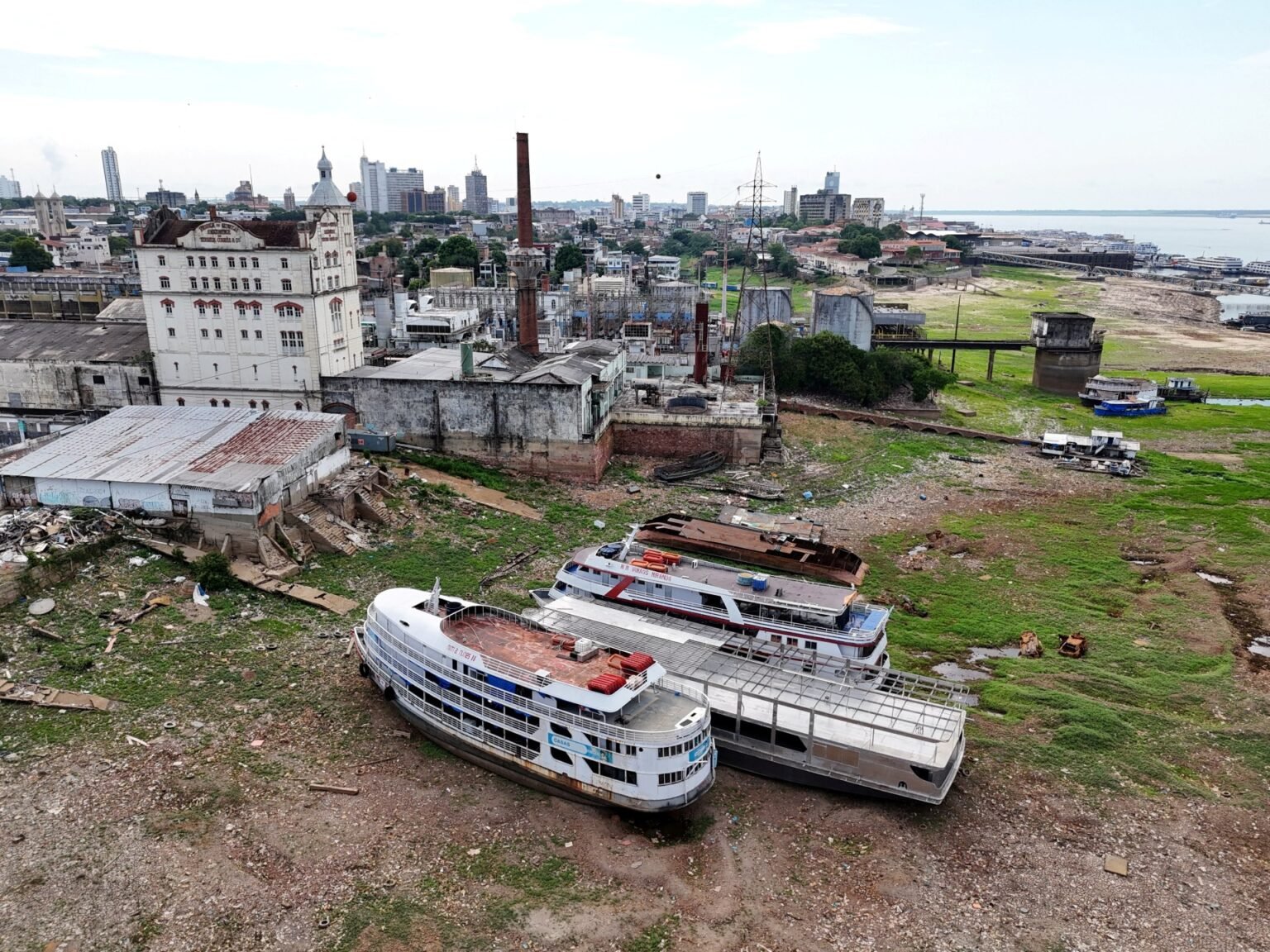The Rio Negro, one of the largest rivers in the world, has reached record-low water levels amid drought and wildfires in the Amazon. On Friday, the river plummeted to a depth of 12.66 meters, the shallowest recorded since measurements began in 1902. Researchers fear the water levels could fall even further as the dry season continues through much of October, creating an environmental and economic crisis in the region.
As a major tributary of the Amazon River, the Rio Negro drains more than 10 percent of the water in the Amazon River basin and is the sixth-largest river in the world by average discharge. It is also the world’s largest blackwater river, with dark currents due to decaying plant matter. However, widespread drought has caused the river to shrink and other waterways in the Amazon to also experience historically low water levels, leading to boats being stranded and aquatic animals being beached.
Experts believe climate change has exacerbated the usual dry-season conditions in the Amazon, leaving riverbeds dry and communities relying on the waterways for drinking water, bathing, transportation, and food in a dire situation. The drought threatens a humanitarian crisis for over 40 million people living in and around the Amazon, with businesses along the Rio Negro suffering devastating losses. Freshwater dolphins have been found dead along riverbanks due to stress from the drought, highlighting the impact on aquatic wildlife.
In addition to the drought affecting the Rio Negro, the Amazon rainforest has been struggling with below-average rainfall and man-made fires that have ravaged the dense tree cover. As much as 59 percent of Brazil is feeling the effects of the drought, with a researcher at the National Center for Monitoring and Early Warning of Natural Disasters calling it the most intense and widespread drought in the country’s history. The situation is dire for communities relying on the Amazon for their livelihoods and for the delicate ecosystem that is being affected by the changing climate and human activity.
The current water crisis in the Amazon has severe implications for the region’s biodiversity, local communities, and the global environment. The record-low water levels in the Rio Negro and other tributaries are exacerbating an already challenging situation caused by climate change and deforestation. Urgent action is needed to address the root causes of the environmental crisis and provide support for those affected by the drought, both in terms of immediate assistance and long-term sustainability measures.
Efforts to address the water crisis in the Amazon will require cooperation between governments, scientists, local communities, and international organizations. Mitigating the effects of climate change, protecting the rainforest, and ensuring the well-being of those impacted by the drought are crucial steps to prevent further devastation in the region. The record low water levels in the Rio Negro serve as a stark reminder of the urgent need for collective action to address the environmental challenges facing the Amazon and the planet as a whole.











